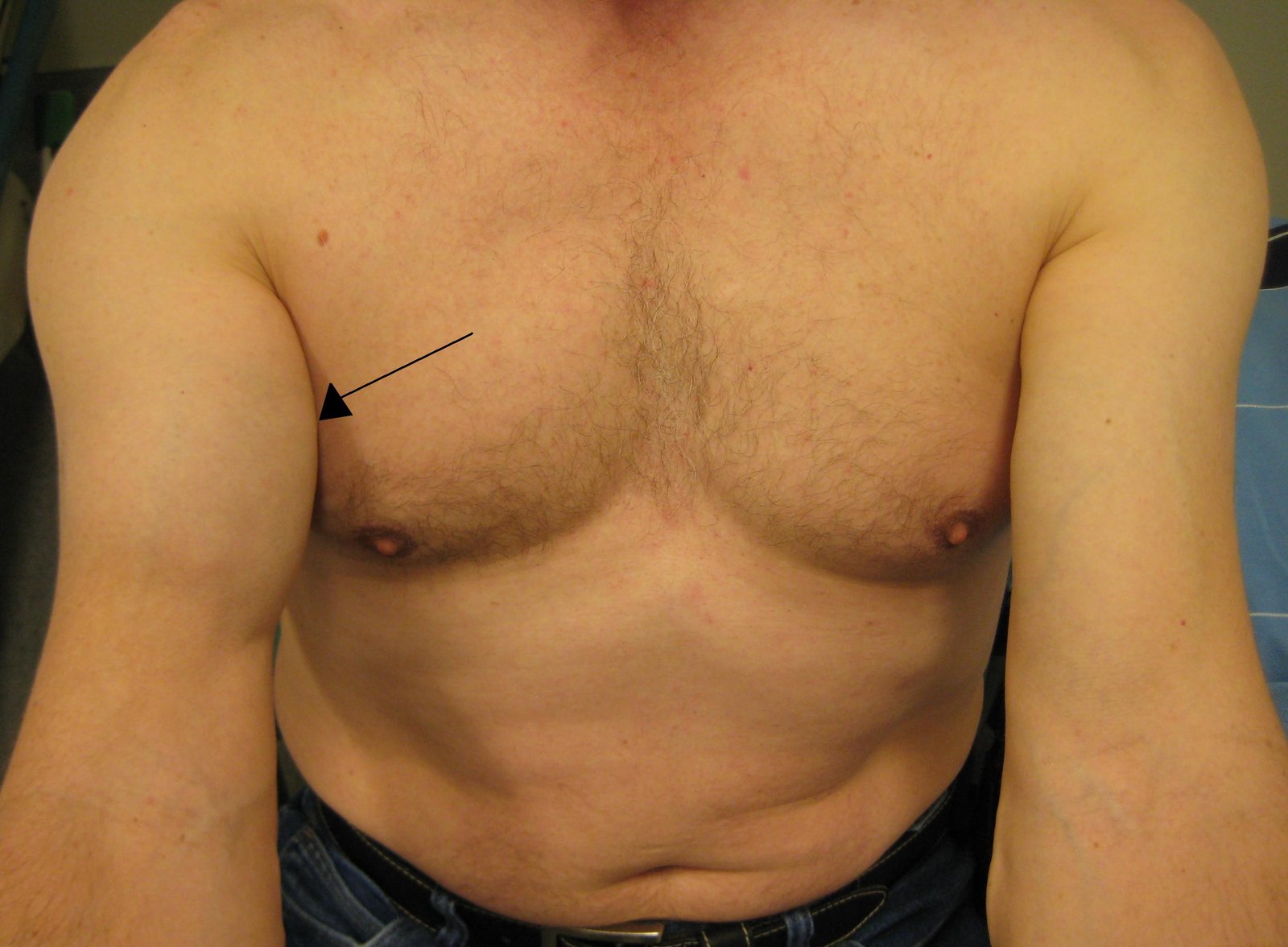Physical Therapist’s Guide to Autism Spectrum Disorder Children with autism spectrum disorder (ASD) experience delays in the development of basic skills in specific areas. They have difficulty interacting and communicating socially, and they show limited and repetitive patterns of behavior. Children with ASD may rely on routines, such as putting on their clothes in the
Physical Therapist’s Guide to Autism Spectrum Disorder
Children with autism spectrum disorder (ASD) experience delays in the development of basic skills in specific areas. They have difficulty interacting and communicating socially, and they show limited and repetitive patterns of behavior. Children with ASD may rely on routines, such as putting on their clothes in the same order every day, and may be very sensitive to changes in routines or the environment. They are often delayed in acquiring motor (movement) skills and may have difficulty with motor coordination, postural control, and imitating the movements of other people. Symptoms of ASD begin in late infancy or early childhood; however, they may not be recognized until the child is older. Symptoms in individuals vary from mild to severe. About 1 in 68 children in the United States has been identified with ASD, and the disorder is almost 5 times more common in boys than girls.
What is Autism Spectrum Disorder?
Autism spectrum disorder (ASD) is a developmental disability resulting in social, communication, and behavioral challenges. Symptoms begin in early childhood and continue throughout the lifespan. While many terms previously were used related to autism, in 2013 all autism disorders were merged into 1 umbrella diagnosis of ASD. This change conforms to the May 2013 release of the American Psychiatric Association’s new edition of the Diagnostic and Statistical Manual of Mental Disorders (DSM-5). The DSM-5 is used by many organizations, individuals, and governments to classify diagnoses, including ASD. The use of the term “spectrum” allows for the variations in symptoms and behaviors identified among children with this diagnosis.
All of the causes of ASD are not yet known, but specific environmental, genetic, and biological factors may predispose a person to develop ASD. The number of children being diagnosed with ASD is increasing, and may be related to better efforts at diagnosis or to an increase in causes of ASD not yet understood.
Motor (movement) skills are impaired in individuals with ASD. Research has shown that motor coordination, postural control, and learning of skills through imitation of the movements of other persons may be limited, and planning and completing new motor tasks are challenges for many children with ASD. Early motor delays in children with ASD may contribute to difficulty acquiring social skills.
Research also shows that early intervention services can help children with ASD learn important skills and improve development. Early diagnosis can help a child with ASD achieve full potential. Physical therapists are members of teams that provide services to children with ASD and their families from early childhood, through the school years, and into adulthood.
Signs and Symptoms
The signs and symptoms of autism spectrum disorder (ASD) vary widely. ASD is defined as a “spectrum” disorder because of the many different presentations of symptoms. Individuals with mild symptoms are at one end of the spectrum, and individuals with more severe symptoms are at the other end.
Symptoms begin in early childhood and last throughout a lifetime, but can improve over time with intervention. About one-third to one-half of parents who have children with ASD notice symptoms before their child’s first birthday, and nearly 80% to 90% of parents see symptoms interfering with function by 2 years of age.
The 2 core signs that indicate a person may have ASD are:
- Difficulties in social communication and interaction
- A tendency to engage in restricted, repetitive patterns of behavior
Signs and symptoms related to social communication and interaction may include:
- Avoidance of eye contact
- Preference for playing alone, and not engaging in imaginative play
- Limited interest in peers
- Lack of engagement in social interactions
- Avoidance of or resistance to physical contact
- Difficulty understanding other people’s feelings, body language, and tone of voice
- Lack of understanding of personal space boundaries
- Delayed speech and language skills
- Lack of pointing or responding to pointing
- Repetitive speech on a preferred topic, or repetition of words or phrases
Signs and symptoms related to restricted, repetitive patterns of behavior may include:
- Self-stimulation through repeated activities (flapping hands/arms, spinning, rocking)
- Becoming upset by minor changes, or the need to adhere to routines
- Obsessive interests, such as the lining up of toys or other objects
- Short attention span, except for preferred topics or activities
- Aggression, self-injury, or temper tantrums
- Lack of safety awareness
- Unusual reactions to sound, smell, taste, sight, touch, or movement
Other characteristics of ASD described in medical literature and related to movement include:
- Delays in both large movement skills (walking, jumping, skipping), and the use of the hands for small movement skills (buttoning a shirt or drawing with a crayon)
- Difficulty with imitating the movements of other people (performing actions to songs with peers, or jumping over a small object)
- Lack of coordination
- Poor balance
- Difficulty with planning and repeating movements or performing movements in a specific order
- Instability when walking
- Difficulty controlling posture
- Decreased eye–hand coordination
- Difficulty using sensory information for movement (may range from a low energy level and slow motor responses to exaggerated motor responses or craving of movement opportunities)
How Is It Diagnosed?
If you think your child may have ASD, contact a physician with your concerns. Getting an accurate diagnosis is the first step toward receiving needed intervention. The physician may refer your child to a specialist for an in-depth evaluation, including diagnosis. Specialists who typically diagnose ASD (or decide that an individual does not have ASD) include developmental pediatricians, child neurologists, child psychologists, and child psychiatrists.
No specific tests can diagnose ASD, but health care professionals may use assessment tools, such as the Autism Diagnostic Observation Schedule, 2nd edition (ADOS-2), and the Autism Diagnostic Interview-Revised (ADI–R) to aid in determining the diagnosis. A child’s behavior and development must meet specific criteria to receive a diagnosis of ASD. Individuals diagnosed with ASD have symptoms that cause significant difficulty in important areas of current functioning. Individuals with ASD show symptoms from early childhood, even if those symptoms are not recognized until the child is older when social demands increase. Parents may recall earlier symptoms and realize that they didn’t know what those symptoms meant at that time.
How Can a Physical Therapist Help?
Physical therapists can work with your child, family, and educational team to help your child:
- Improve participation in daily routines at home and school
- Acquire new motor skills
- Develop better coordination and a more stable posture
- Improve reciprocal play skills, such as throwing and catching a ball with another person
- Develop motor imitation skills (seeing another person perform an action and then copying that action)
- Increase fitness and stamina
A physical therapist will conduct a thorough evaluation of your child that will typically include a health and developmental history and assessment of:
- Postural strength and control
- Functional mobility (eg, walking and running)
- Body and safety awareness
- Coordination
- Play skills
- Interests and motivators
- Ability to change between different activities
- Strengths and challenges in making large body movements, such as jumping, hopping, pedaling a tricycle or bicycle, and skipping
- Participation in daily routines in the home, community, and school
Your physical therapist will work with you to develop goals to help your child participate as fully as possible in daily routines at home, in the community, and at school. Your physical therapist will then develop a comprehensive plan to meet your child’s, and your whole family’s needs. No “standard” treatment exists for children with ASD. Each child’s challenges and goals are different. Your physical therapist will design an individual program to meet the strengths and needs of your child. The therapist will work with you to monitor how your child progresses, and collect data to make sure that the treatment plan is leading to positive outcomes for your child.
Physical Therapy in the Early Years: Birth to Age 3
Physical therapists work with families and caregivers to increase a child’s participation in routines of daily life that are challenging. They promote opportunities during free play and structured play to develop and practice the movement skills common to your child’s age group. Physical therapists work on increasing strength and coordination, and walking safely and efficiently in all needed environments, such as negotiating stairs. Priorities may include developing imitation skills (eg, performing actions to songs like “Head, Shoulders, Knees, and Toes”) and indoor and outdoor play skills. Guidance is provided to include structure, routines, and physical boundaries to daily activities to promote positive behaviors.
Physical Therapy in the School Years (Including Preschool): Ages 3 to 18
Physical therapists work with parents and teachers to increase awareness about the impact of ASD on school functioning. They use the latest, most effective treatments based on medical evidence to minimize each child’s challenges and help make the school experience a positive one. Physical therapists recommend modifications and accommodations to support learning. Examples include using ball chairs to reduce “out-of-seat behaviors,” and using hula hoops, carpet squares, or specially placed seating to identify personal space. They provide whole-class movement breaks, and use strategies like “motor learning” to teach the movement skills needed to participate in social games and peer interactions.
Physical therapists provide direct help when needed to improve a child’s ability to negotiate challenges, such as school bus steps, crowded hallways, cafeterias, and playgrounds. They work together with school teams to promote skills like self-regulation, listening, and taking turns. Strategies are provided to teach the child how to imitate the movement activities of other children, develop directional concepts, body and spatial awareness, and coordination as well as to promote success in physical education and fitness activities.
Physical Therapy During Adulthood: Age 18+
Physical therapists work with adults with ASD to promote success in daily life. They recommend community resources to increase movement opportunities. They develop individualized exercise routines to promote body coordination and walking skills. They work with each individual to help improve movement, function, and fitness so the individual can hold a job, function at home, and enjoy leisure activities.
Real Life Experiences
Young Child
Aaron is a three-year-old child with ASD who is fascinated by all things that have to do with technology. He likes to watch the Disney movie “Madagascar” over and over again, and he likes to repeat the lines from his favorite character throughout his day. Aaron has low muscle tone, has difficulty moving, and appears “clumsy.” He does not play with his peers at his preschool. He prefers to talk to his teachers about their cell phones or the “Thomas the Tank Engine” shows.
Aaron walks up on his toes when on the grass or sand because he doesn’t like the feeling of different sensations on his feet. He avoids climbing on playground equipment during recess because he moves more slowly than his peers. He is afraid of being bumped and losing his balance.
Aaron receives school-based physical therapy in a year-round program. His physical therapist consults with his teachers and other team members, and works with Aaron in his classroom and on the playground during recess. She focuses on helping him develop his strength, balance, and coordination skills so he will be able to jump, run, and climb playground equipment. Aaron is learning to climb stairs with his peers around him, and to step up and down on playground structures without reaching for support. He practices running games on the playground surfaces including grass, small hills, and sand.
His physical therapist also uses play to help Aaron with his social skills. Aaron’s parents are very happy to see him starting to interact with the other children in games. He is beginning to keep up with his peers when climbing the playground structures and running, although he is still hesitant on uneven terrain. Aaron is becoming interested in reciprocal games, such as throwing and catching a ball. He is starting to kick a rolling ball, and no longer avoids running and kicking the soccer ball with his peers. Aaron is starting to ask to play soccer at recess!
Older Child
Sam is an 11-year-old middle-school student with ASD. He has never received physical therapy. Sam cannot yet ride a bike or keep pace with his peers when running. He is unable to participate in play, extra-curricular activities, or social groups with classmates due to his difficulties with balance, coordination, and planning how to perform movements like his peers. His parents seek help by a physical therapist.
Sam’s physical therapist talks to him about his goals. She completes an evaluation and develops a comprehensive treatment plan. She works directly with Sam and consults with his family and school team. Sam receives intensive physical therapy over the summer, and intermittent services during the school year. Together, Sam and his physical therapist work to strengthen his posture, increase his body awareness, and improve his balance and ability to plan motor tasks. She uses tools like a therapy ball, horizontal rope ladder, platform swing, and hula hoop to make the activities fun and motivating for Sam. She leads him and his friends in “partner” games (eg, “mirroring” movements or passing a ball “over and under” in a line), which require changes in his head and body positions. The games help him to learn where his body is in space, and to take turns while playing. His physical therapist provides recommendations to Sam’s parents for including fitness activities in the family’s daily routine. She also recommends foot orthoses to slip into his shoes, to help his feet hit the ground more evenly.
By the end of the summer, the data his physical therapist has maintained show that Sam has progressed in many movement-skill areas! The acquisition of new skills helps Sam keep up with his peers. Immediately after 1 physical therapy session, Sam for the first time spontaneously introduces himself to a new person and shakes the person’s hand. His parents are pleased and amazed by his improved movement and social skills.
When school starts in the fall, Sam is able to participate in the drama club and school musical with his peers. He has better coordination and control of his body in space, as well as more confidence. By the end of the school year, he has sufficient strength and balance to ride his bicycle independently. At the beginning of the following school year, he is able to participate with the track team, and he runs without flapping his arms. Sam enjoys the social and fitness benefits of his gains in motor skills, and his self-esteem has improved. He continues to maintain an honor-roll GPA. His parents now receive reports about how well he is doing in his classes, and no longer dread a phone call from school.
What Kind of Physical Therapist Do I Need?
All physical therapists are prepared through education and experience to treat individuals with autism spectrum disorder (ASD). However, you may want to consider:
- A physical therapist who is experienced in treating individuals with ASD. Some physical therapists have a practice with a focus on pediatrics (treating children).
- A physical therapist who is a board-certified specialist in pediatrics or who has completed a residency in pediatric physical therapy. This therapist has advanced knowledge, experience, and skills that may apply to ASD.
You can find physical therapists who have these credentials by using Find a PT, the online tool built by the American Physical Therapy Association to help you search for physical therapists with specific clinical expertise in your geographic area.
General tips when you are looking for a physical therapist (or other health care provider):
- Get recommendations from family and friends or from other health care providers.
- When you contact a physical therapy practice for an appointment, ask about the physical therapist’s experience in working with children with autism spectrum disorder.
- During your child’s first visit with the physical therapist, be prepared to describe your child’s and family’s needs in as much detail as possible.
Further Reading
The American Physical Therapy Association (APTA) believes that consumers should have access to information that could help them make health care decisions and also prepare them for their visit with their health care provider.
The following articles provide some of the best scientific evidence related to physical therapy treatment of individuals with autism spectrum disorder (ASD). The articles report recent research and give an overview of the standards of practice both in the United States and internationally. The article titles are linked to a PubMed* abstract of the article or to free full text so that you can read it or print out a copy to bring with you to your health care provider.
National Autism Center. National standards project: findings and conclusions/addressing the needs for evidence-based practice guidelines for autism spectrum disorders. National Autism Center website. Accessed August 6, 2014.
Srinivasan SM, Pescatello LS, Bhat AN. Current perspectives on physical activity and exercise recommendations for children and adolescents with autism spectrum disorders. Phys Ther. 2014;94(6):875–889. Article Summary in PubMed.
Downey R, Rapport MJ. Motor activity in children with autism: a review of current literature. Pediatr Phys Ther. 2012;24(1):2–20. Article Summary in PubMed.
Sowa M, Meulenbroek R. Effects of physical exercise on autism spectrum disorders: a meta-analysis. Res Autism Spectr Disord. 2012;6:46–57. Free Abstract here.
Fragala-Pinkham MA, Haley SM, O’Neil ME. Group swimming and aquatic exercise programme for children with autism spectrum disorders: a pilot study. Dev Neurorehabil. 2011;14(4):230–241. Article Summary in PubMed.
Anderson-Hanley C, Tureck K, Schneiderman RL. Autism and exergaming: effects on repetitive behaviors and cognition. Psychol Res Behav Manag. 2011;4:129–137. Free Article.
Bhat AN, Landa RJ, Galloway JC. Current perspectives on motor functioning in infants, children, and adults with autism spectrum disorders. Phys Ther. 2011;91(7):1116–1129. Free Article.
Nobile M, Perego P, Piccinini L, et al. Further evidence of complex motor dysfunction in drug naive children with autism using automatic motion analysis of gait. Autism. 2011;15(3):263–283. Article Summary in PubMed.
Rinehart N, McGinley J. Is motor dysfunction core to autism spectrum disorder? Dev Med Child Neurol. 2010;52(8):697. Free Article.
Dziuk M, Gidley Larson JC, Apostu A, Mahone EM, Denckla MB, Mostofsky SH. Dyspraxia in autism: association with motor, social, and communicative deficits. Dev Med Child Neurol. 2007;49(10):734–739. Free Article.
* PubMed is a free online resource developed by the National Center for Biotechnology Information (NCBI). PubMed contains millions of citations to biomedical literature, including citations in the National Library of Medicine’s MEDLINE database.
Authored by Lori Glumac, PT, DSc, PCS; Bala Pallai, PT, DPT, MA, PCS; Karen Tartick, PT; Liliane Savard, PT, DPT, PCS; Marycarol Baker, PT; Karen Greeley, PT, DScPT; Lisa Milkavich, PT, DPT.







Leave a Comment
You must be logged in to post a comment.